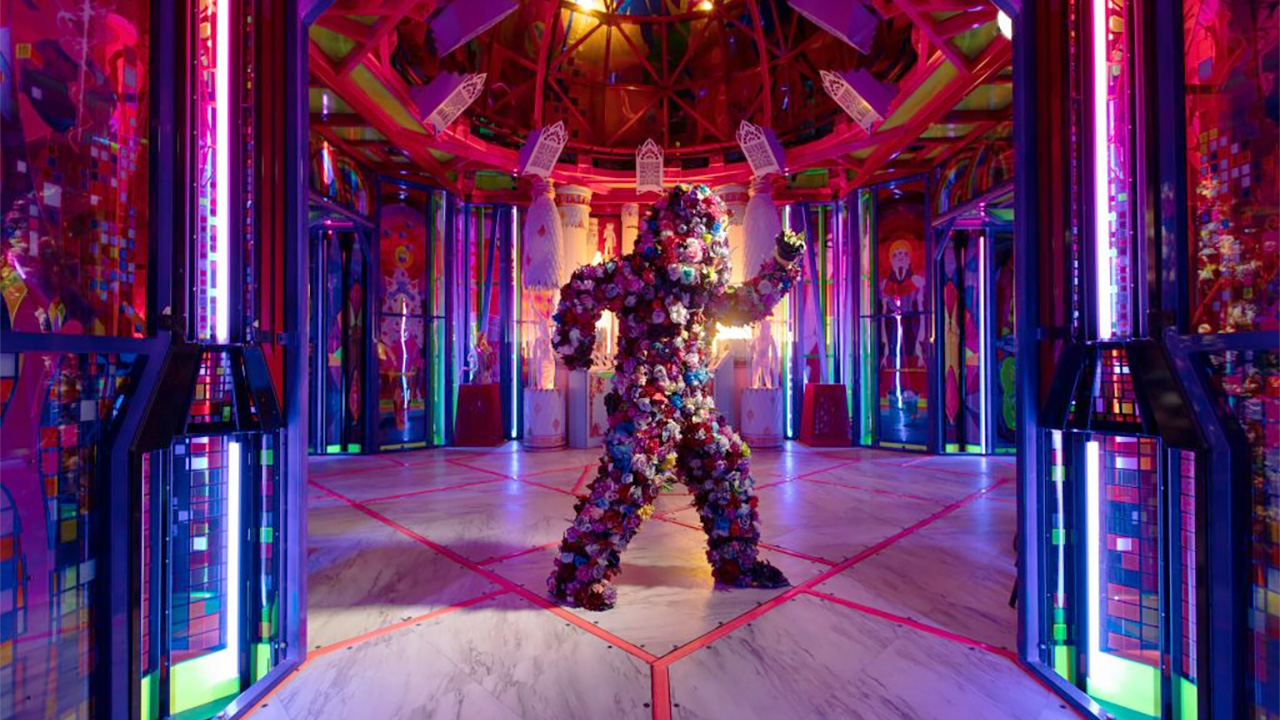On September 17, Meow Wolf will be launching its third permanent installation, Convergence Station, in Denver, Colorado. Following up on House Eternal Return in New Mexico and Omega Mart in Las Vegas, the Santa Fe-based art collective’s latest immersive experience is spread out across four floors of a 488-person capacity venue and features 79 projects with a surrealist science fiction theme.
Some four years-in-the-making, the installation was created by more than 300 local creatives, including artists, sculptors, muralists, and technologists. This collaborative ethos, notes Conor Peterson, Meow Wolf’s General Manager of Technology, has fueled a creatively ambitious build-out. “Artists generally tend to create their artwork without regard for high-touch environments, durability, or needing to pass a fire or electrical inspection,” he tells Jing Culture and Commerce. “We have addressed that by spending time matching artists with creative engineers and expert fabricators so we can take their creative vision and make it real in a way that will satisfy the authorities.”
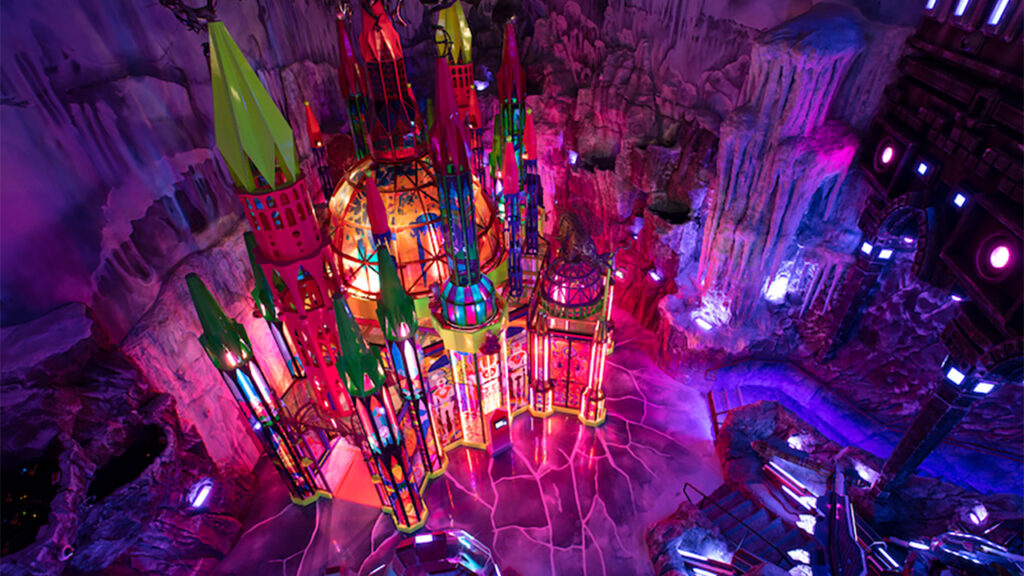
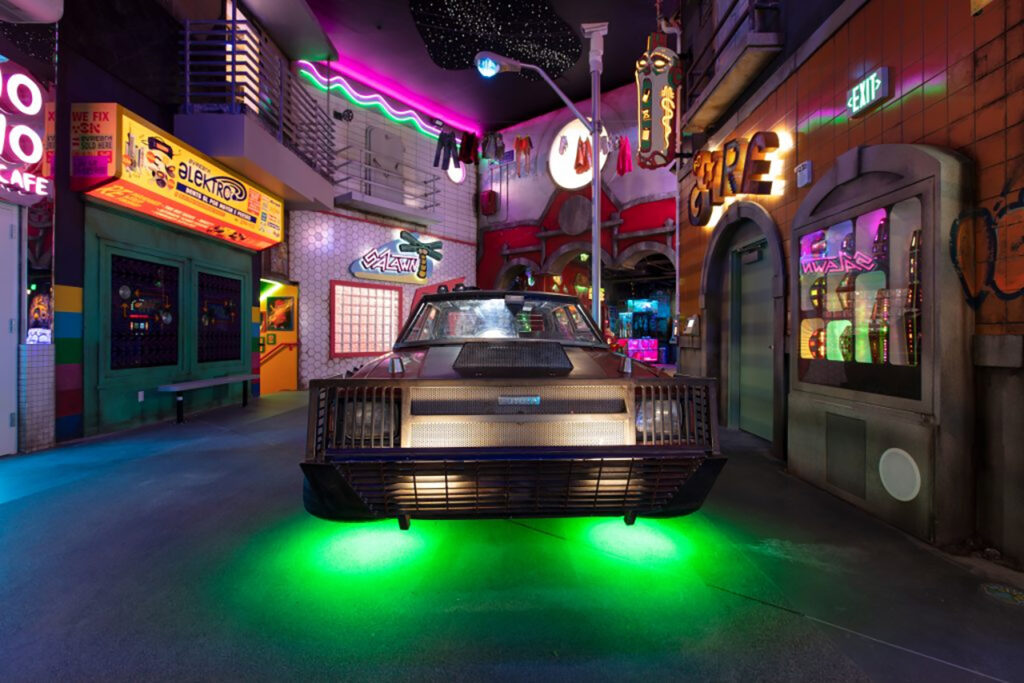
Various environments within Convergence Station: a kaleidoscopic cathedral in Ice World (above) and the neon-lit C Street (below). Images: Kate Russell and Kennedy Cottrell / Meow Wolf
Convergence Station marks Meow Wolf’s continued rise in the immersive field, a sector that has seen experiences from transportive Van Gogh exhibitions to teamLab’s various projects gain in popularity and value in the past few years. According to a 2020 report by immersive studio Pseudonym Productions, the experience industry, prior to the pandemic, was valued at $61.8 billion, and saw more than $200 million in private and venture capital investments in 2019.
As lockdowns lift across America, Convergence Station also joins similar immersive experiences in offering audiences attractive reasons to physically reengage with art. Here, as Peterson tells us, is how Meow Wolf did it.
What goes into creating a Meow Wolf installation such as Convergence Station?
More than anything else, time planning. The keyword there is permanent — that means building it to last. In my experience, [permanence] runs contrary to technology. Our technology gets dated really quickly, so the planning phase for the exhibition went on for a very extended period of time.
Pretty much anything that involved technology meant that it was tied to a set of building inspections and the permitting process. That can lead to situations that feel really backwards to artists, where you have to decide what all the technology is going to be before you even figure out what your design is. Also creatively, there was a lot of concern over “how is this going to look” or “is it going to look dated” and “if it does look dated is it going to be cute?”
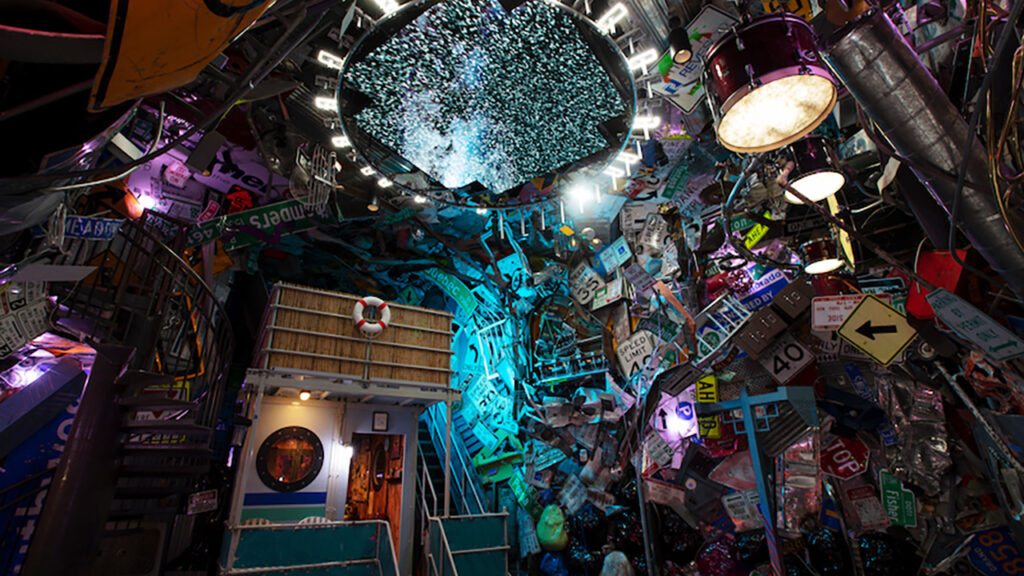
The installation is powered by various projection-mapping and depth sensing technologies throughout, ensuring an interactive experience. Image: Kate Russell / Meow Wolf
Could you outline some of the technology that’s in this experience?
Being Meow Wolf, there’s a really wide range of fun technologies that may not even be visible to people. We have sophisticated projection-mapped spaces with many channels of video, all being composited together. We also have at least several instances of using depth sensing cameras for video game controls, but also to make the environment more responsive. There are a lot of capacitive touch and RFID technologies in the show, and adjacent technologies that allow us to sense somebody nearby. We have a couple of pieces that were so hard to instrument with conventional capacitive touch that we had to resort to theremin technology in order to extend the range of directivity.
We also have a really prominent musical robot, where we have instrumented conventional musical instruments with solenoids and electromagnets to make them function automatically and play their own music.
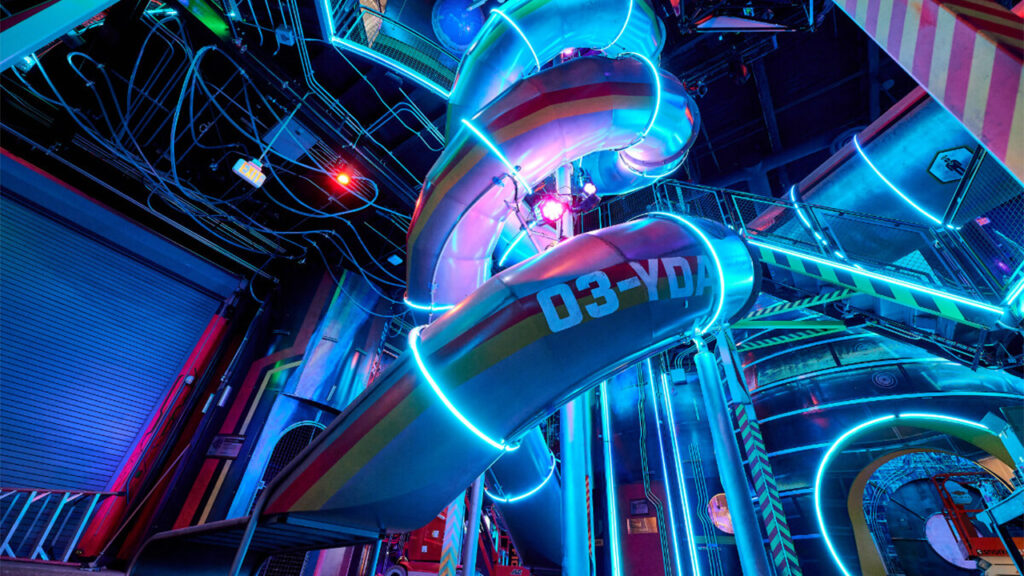
Meow Wolf’s second installation, Omega Mart, opened in 2021 in Las Vegas, offering visitors a psychedelic journey through an outerwordly grocery store. Image: Meow Wolf
RFID technology is present at Meow Wolf’s Omega Mart installation as well. What is its role in Convergence Station?
We have a whole RFID exhibit with checkpoints scattered throughout the space that visitors can bring a conventional RFID card to and check in. Also, the backend of the RFID system is attached to a lot of the output devices in the show. As visitors work through the RFID layer, they’re able to affect changes in the environment by manipulating lights, triggering audio, etc. We rely heavily on a protocol called OSC (Open Sound Control) to send and receive messages. It’s the lingua franca of how all the interactive technology works together. It’s like a digital or networking equivalent of MIDI.
How is Meow Wolf thinking about cross reality tech such as augmented reality or virtual reality?
Our collaborative approach to art has always leant itself to an open-ended mixed media narrative. The major benefits of [cross reality technology] is you can do narrative content more easily. You can add narrative content or change it out because it’s a digital experience, so that gives us sort of evergreen opportunities to hopefully bring people back into the exhibit. And if it’s a direct interactive experience, the technology also provides a way for people to review some of the content for the show on their own device outside of the exhibit, and also allows us to increase accessibility, because phones can be more accessible than physical objects in the real world.
What will future Meow Wolf exhibitions potentially look like, and are there any currently in the works?
I cannot let the cat out of the bag about any current projects. But I can say artists like to try new things, and look forward to Meow Wolf projects as an opportunity to turn their work upside down and build at a scale they hadn’t before. We have a team of extremely talented creative engineers, all who have a background in the fine arts and who really enjoy unlocking those possibilities.

